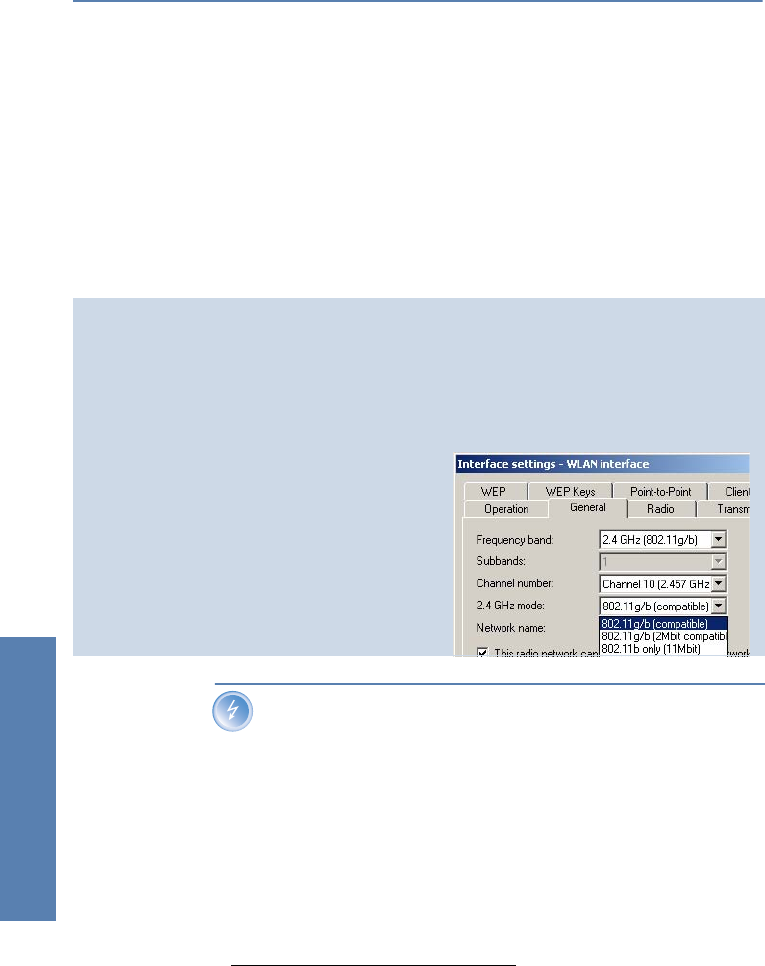
LANCOM Reference Manual LCOS 3.50 ̈ Chapter 11: Wireless LAN – WLAN
206
Wireless LAN – WLAN
Your LANCOM base station supports - according to the model type - the
standards IEEE 802.11g (downward-compatible to IEEE 802.11b), and/or IEEE
802.11a.
The operation of the integrated wireless card of your base station is only pos-
sible in one single frequency band, that is, either 2,4 GHz or 5 GHz. Thus a
simultaneous operation of IEEE 802.11g and IEEE 802.11a is not possible.
Since IEEE 802.11g is downward-compatible to IEEE 802.11b, an simultane-
ous operating of these two standards is possible, but with certain speed con-
straints.
Please notice that not all frequencies are permitted in each country!
You will find a table with the allotted frequencies and the permission
regulations in the appendix.
11.1.2 Operation modes of Wireless LANs and base stations
Wireless LAN technology and base stations in Wireless LANs are used in the
following operation modes:
̈ Simple direct connections between terminals without base station (ad-
hoc mode)
1. Institute of Electrical and Electronic Engineers – International association, which estab-
lished i.a. numerous technology standards.
Transfer rates in compatibility mode
Please notice that the reached data transfer rates depend on the used 2,4 GHz mode. You will
achieve the highest transfer rates with a base station operating in the 802.11g mode. The
transfer rate will go down when starting the compatibility mode, even, if only inactivated
802.11b stations are near to your base station. When these 802.11b stations start to be acti-
vated in a wireless network with operating com-
patibility mode, the actual transfer rate will fall
again.
That’s why you should only activate the compati-
bility mode, when you have really operating
802.11b and 802.11g stations in your wireless
network.


















